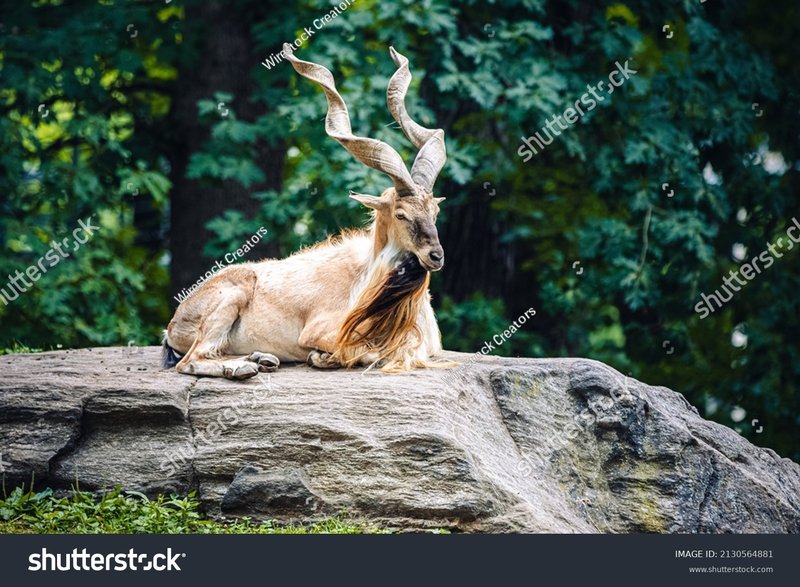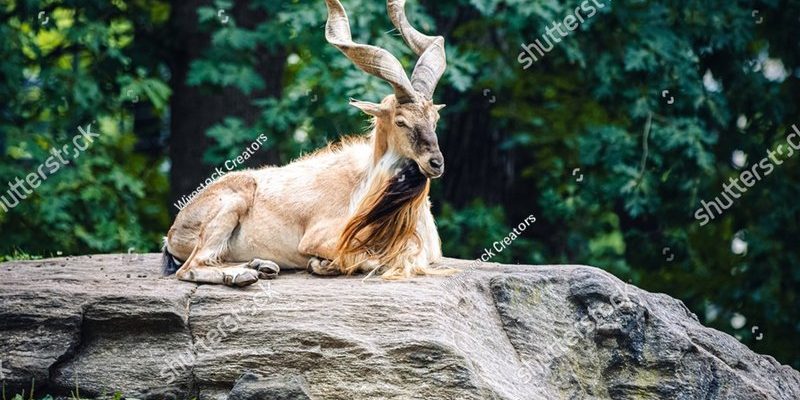
Many folks get confused about their habitat, behavior, and even their status as a species. It’s easy to mix up facts, especially when the markhor is often overshadowed by more commonly known animals like deer or bighorn sheep. Let’s take a journey through the myths and misconceptions surrounding these unique animals, peeling back the layers to reveal the truth beneath.
Myth 1: Markhors Are Just Like Domestic Goats
One of the most common misconceptions is that markhors are just another type of goat. Sure, they share some similarities, but calling them “just goats” is like saying a lion is “just a cat.” Markhor belong to the Capra genus, like domestic goats, but they are wild animals that have adapted to some of the most rugged terrains.
These animals can be found in the mountains of Pakistan, Afghanistan, and Tajikistan, among others. Their impressive horns can reach lengths of up to five feet, making them quite a sight. Imagine a goat with grandiose, twisting horns—definitely not your backyard pet! Unlike domestic goats, markhors are adapted for survival in the wild, exhibiting keen instincts and behaviors that reflect their challenging environment.
You might be wondering how they navigate such steep terrain. Well, markhors are incredibly agile climbers. Their hooves are designed for gripping rocky surfaces, allowing them to leap and bound across cliffs with ease. This agility is crucial for escaping predators and finding food among the sparse mountain flora.
Myth 2: Markhors Are Endangered Due to Hunting Alone
Another misconception is that markhors are endangered solely because of hunting. While poaching has played a significant role in their decline, it’s not the whole story. Habitat loss due to human encroachment and environmental changes has also contributed to their shrinking numbers.
Markhors thrive in a specific habitat where they can find both food and safety, usually in mountainous areas with rugged landscapes and plenty of vegetation. Unfortunately, as humans expand into these regions for farming or development, these vital habitats shrink. When you consider all the factors, it’s clear that their survival depends on much more than just the hunting regulations in place.
Efforts to conserve markhors have been made in several countries, including Pakistan, where local communities are involved in protecting them. By fostering a sense of responsibility toward wildlife, people are learning to see these animals as valuable assets rather than just targets for sport.
Myth 3: All Markhors Have the Same Horns
Let’s dive into a detail that often flies under the radar: not all markhors have the same type of horns. While you might imagine that all these majestic creatures sport identical spirals, that’s far from the truth. In fact, horn variations can tell us a lot about the individual markhors.
For instance, male markhors typically have larger and more spiraled horns compared to females. However, even among males, the shape and size can vary greatly. Some might have thick, heavy horns, while others may sport sleeker ones. These differences can give insight into the markhor’s age, health, and even social standing within a herd.
The impressive horns serve various purposes, from attracting mates to warding off rivals. Watching a male markhor use its horns in a head-to-head battle during mating season is a sight to behold. It’s not just about size; strategy and agility matter too, just like a game of chess played out in the wild.
Myth 4: Markhors Are Solitary Creatures
You might think that markhors lead a lonely existence, but this couldn’t be further from the truth. While they are known for their ability to thrive in solitude, especially when foraging or escaping danger, they are not entirely solitary. Markhors often form small herds, particularly during mating season or when raising young.
In these herds, a social structure helps maintain harmony and safety. Young females and their young tend to stay close to the matriarch, while males might separate themselves from the group during certain times, especially during the mating season when competition heats up. This behavior is crucial for survival, as there’s safety in numbers when it comes to evading predators.
Imagine a tight-knit group of friends navigating a tricky hiking trail together. They look out for one another, share resources, and watch each other’s backs—this is much like how markhor herds function. The strong bonds formed in these groups help them face the challenges of their natural habitat.
Myth 5: Markhors Are Strict Herbivores
While markhors primarily eat plant matter, thinking of them as strict herbivores misses some fun nuances of their diet. They tend to forage on a wide variety of vegetation, including grasses, leaves, and even some shrubs. But here’s the kicker: they can adapt their diet based on what’s available in their environment.
During the harsh winter months, when food is scarce, markhors have been known to munch on bark, twigs, and sometimes even the occasional lichen. So, while their diet is mostly herbaceous, these adaptable creatures will take the opportunity to supplement their nutrition when necessary.
Consider them like a mountain gourmet—they’ll feast on whatever’s available. This adaptability means that markhors have a better chance of surviving in fluctuating conditions, which is vital for their overall well-being.
Myth 6: Markhors Are Not Important Ecologically
Some may think markhors are just another pretty face in the animal kingdom, but that’s far from the case. They play a significant ecological role in their habitats. As they forage on vegetation, markhors help in seed dispersal. When they munch on plants, they also contribute to the health of those ecosystems.
By grazing on various plants, they help maintain the balance of the species in their environment, preventing any one plant from dominating. In a way, they act like nature’s gardeners, ensuring that diverse plant life can thrive.
Moreover, markhors are also prey for larger predators, which means they fit into the food web seamlessly. Their presence supports the entire ecosystem, showing that every animal, no matter how big or small, plays a role in keeping nature in harmony.
Myth 7: Markhors Are Dangerous to Humans
Finally, let’s clear the air regarding the danger markhors pose to humans. Some folks might believe that due to their impressive size and horns, markhors are aggressive or hostile. The truth is, these animals are generally quite shy and will avoid human contact whenever possible.
Like many wild animals, markhors will defend themselves or their young if they feel threatened, but they are not inherently dangerous. In fact, if you find yourself in their territory, the best approach is to admire them from a distance. Just think of them as mountain spirits—majestic yet peaceful.
If you’re lucky enough to spot one, remember to respect their space and enjoy the moment. After all, seeing a markhor in its natural habitat is a rare and beautiful experience that shouldn’t be marred by fear or misunderstanding.
In wrapping up this exploration of the common myths and misconceptions about markhors, it’s clear there’s a wealth of fascinating truths hidden beneath the surface. These incredible animals are so much more than simple goats or mere survivors—they are essential parts of their ecosystems, social creatures that live complex lives. Hopefully, this article sheds some light on just how important it is to appreciate and protect them, ensuring future generations can enjoy the wonder of the markhor.

